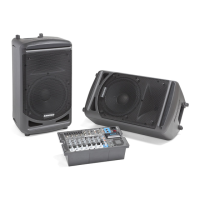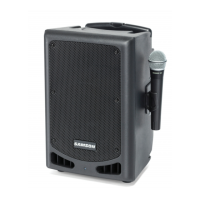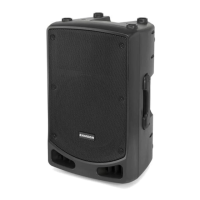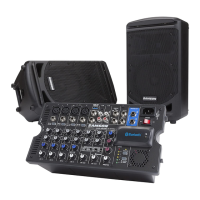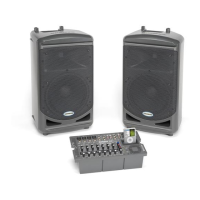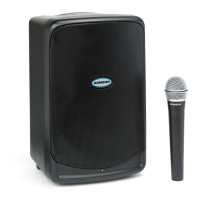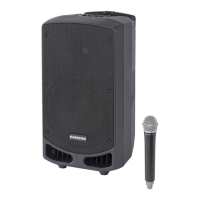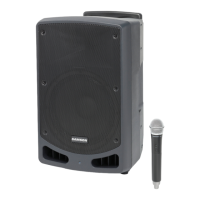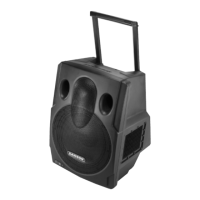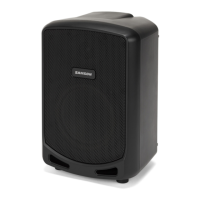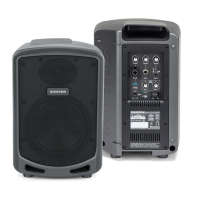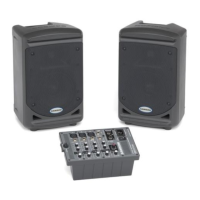
Do you have a question about the Samson EXPEDITION XP150 and is the answer not in the manual?
| Type | Portable PA System |
|---|---|
| Speaker Configuration | 2-way |
| Tweeter Size | 1 inch |
| Bluetooth | Yes |
| Channels | 2 |
| Frequency Response | 50 Hz - 20 kHz |
| Power Output | 150W |
| Mixer | 5-channel |
| Outputs | XLR output |
| Inputs | XLR, 1/4" TRS, RCA, 3.5mm |
Key safety warnings and symbols explained for electrical shock and operational guidance.
Device compliance with FCC Part 15 rules for home or office use, outlining conditions for operation.
Instructions for proper disposal of electronic products to protect the environment and human health.
Overview of the XP150 PA system, highlighting its compact design, power, dual speakers, and portability.
Guidance on recording serial number, warranty registration, and obtaining service for the unit.
Details on the 2-way speaker enclosures, 6-inch woofers, 1-inch drivers, and horn for sound projection.
Information on the 150W Class D amplifier, 5-channel mixer, inputs, and internal digital effects processor.
Instructions for unpacking the system and safely removing the mixer from the speaker cabinet.
Guidance on opening the accessory compartment and retrieving included speaker cables.
Steps for panel replacement, speaker positioning, and connecting the left/right speaker cables to the mixer.
Steps for powering off, connecting speakers, setting volumes to zero, and connecting the main power cable.
Instructions for connecting microphones, instruments, and MP3 players using appropriate audio cables.
Procedure for powering on connected equipment and the XP150, then setting the master volume.
Guidance on adjusting channel volumes, monitoring the POWER/PEAK indicator, and applying reverb effects.
Explanation of how to use LF (bass) and HF (treble) controls for tonal characteristic adjustment.
Instructions on using the 'Slide and Lock' feature to connect speakers for secure and easy transport.
Description of XLR, 1/4-inch, and 3.5mm input connectors for various audio sources like microphones and instruments.
Explanation of High Frequency (HF) and Low Frequency (LF) controls for tonal adjustment and VOL knobs for channel levels.
Details on REVERB switch/knob, VOLUME controls, and the MASTER volume knob for overall output.
Information on SPEAKER OUT jacks, SPEECH/MUSIC switch, POWER/Peak indicator, and IEC power inlet.
Explanation of the mixer lock mechanism for securing the mixer during transport or storage.
Illustrates a typical setup for a cocktail band using microphones, guitar, keyboards, and MP3 player for background music.
Details on using unbalanced 1/4-inch, stereo 3.5mm TRS, and XLR balanced connectors for audio input.
Explanation of XLR balanced wiring conventions for microphones and other balanced audio sources, including pinouts.
Specifications for the amplifier's RMS power, frequency response, and speaker components like transducer and tweeter.
Details on mixer inputs/outputs, EQ, switches, indicators, and physical dimensions/weight of the XP150 system.
Diagram illustrating input signal path through EQ, Reverb, level controls, and summing for channels 1-5.
Diagram showing the output stage, amplifier, power/limiter LED, and speaker connections for the system.

